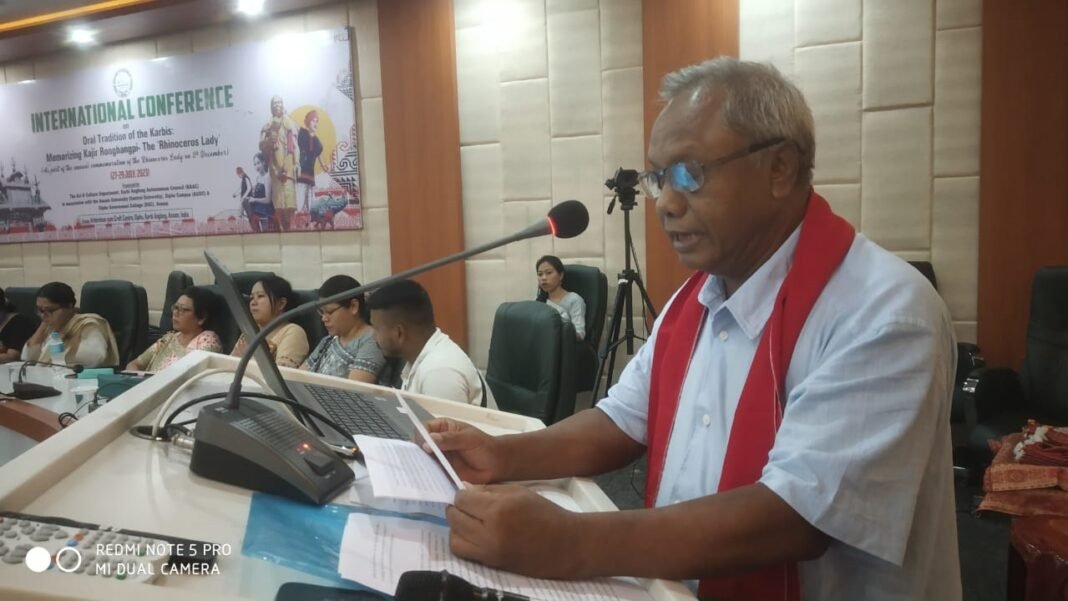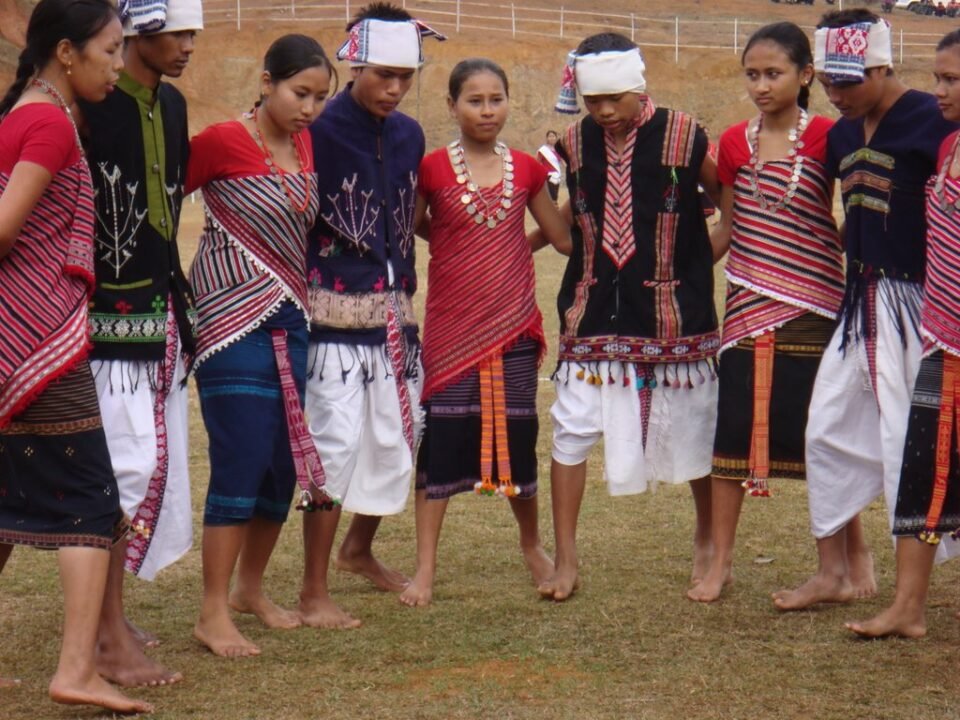HT Bureau
DIPHU, July 28: The three-day international conference on the “Oral tradition of the Karbis: Memorising Kajir Ronghangpi – The Rhinoceros Lady” continued its deliberations at the conference hall of Arboretum cum Craft Centre in Matipung on Friday. The conference, jointly organised by the Art & Culture department of Karbi Anglong Autonomous Council, Assam University (Central University) Diphu Campus, and Diphu Government College, aims to shed light on the legend of Kajir Ronghangpi as part of the annual commemoration of ‘The Rhinoceros Lady’ on December 5.
Renowned researchers and scholars have presented their papers, primarily focusing on ‘Kajir Ronghangpi’. The legend of Kajir Ronghangpi has captivated the imagination of the Karbi community for generations, and the conference provided a platform to delve deeper into the various aspects of her mythical existence.
Among the researchers presenting their findings, Elwin Teron based his research on the rich oral narratives available in Rongkhang, the cultural and political center of the Karbi tribe. He shared memories about the legend of Kajir Ronghangpi, sourced from two individuals who hold vital knowledge about the mythical figure.
Harsing Ronghang, a retired Karbi king, narrated the migration story of the Karbis. According to him, the Karbis migrated from Tibet to the banks of the Brahmaputra, where they established their first settlement. Kajir Ronghangpi’s parents, Sreng Ronghang and Kare Engtipi, lived there. The tragic tale unfolds with the beauty of Kareng Ronghangpi catching the attention of the Ahom king Medhibura, who desired to marry her. However, her rejection led to an act of violence that claimed her life. Kajir Ronghangpi then faced a similar fate, but a unique solution involving lac transformed her appearance from head to toe, earning her the name ‘Kajir-ronga’, which translates to ‘red Kajir’.
Rupsing Ronghang, holding the title of Basapo, provided another perspective on the legend. According to him, Kajir Ronghangpi’s father was Chere Ronghang, a Karbi king who left Socheng to establish his kingdom at Kathalguri. During his journey, Chere carried with him The Golden Seat, which he ultimately had to surrender to the Ahom King.
Based on these narratives, Teron concluded that the legendary figure of Kajir Ronghangpi exists firmly in the oral traditions of the Karbi tribe, particularly in the Rongkhang region. Her portrayal as ‘Ronga’ is attributed either to her fondness for wearing red garments or her association with the lac solution applied to her body.
The conference witnessed presentations on various aspects related to Kajir Ronghangpi, with scholars delving into topics such as the feminine representation in Karbi folklore, the mythistory of Kajir Ronghangpi, and the oral traditions, rituals, and identity formation surrounding the legendary figure. Researchers like Klir Tissopi presented insightful papers on ‘The feminine in Karbi folklore, portraits of Kajir Ronghang and other legendary Karbi women’, while Dr Dharamsing Teron explored ‘The mythistory of Kajir Ronghangpi – The Rhinoceros Lady’. Dr Thejani-I Pohena and Mongolsing Rongphar shed light on the ‘Myth and identity of formation: revisiting the oral tradition of Kajir Ronghangpi’.
Dr Monalisha Rongpipi and Klori Killingpi’s presentation on ‘Oral tradition, Rituals of Kajir Ronghangpi from the perspective of Ecofeminism’ added further dimensions to the discussions. Langtuk Terang and Longbir Engti delved into ‘The legends of Kaziranga through the lens of Karbi folklore’. The conference facilitated a comprehensive exploration of the rich folklore surrounding the legendary figure, fostering a deeper understanding of the cultural heritage of the Karbi community.
As the conference continues to unravel the mysteries and significance of Kajir Ronghangpi, it reinforces the cultural importance of oral traditions in preserving and passing down stories from generation to generation. The researchers’ endeavors provide valuable insights into the mythical realm of Kajir Ronghangpi, capturing the essence of her enduring presence in the hearts and minds of the Karbi people.
The conference remains a testament to the shared commitment of the Art & Culture department of Karbi Anglong Autonomous Council, Assam University (Central University) Diphu Campus, and Diphu Government College to promote and preserve the cultural heritage of the Karbi community. As participants from various fields continue to engage in fruitful discussions and exchanges, the conference promises to enhance the appreciation and understanding of the rich tapestry of the Karbi oral tradition, ensuring that the legend of Kajir Ronghangpi endures for generations to come.







